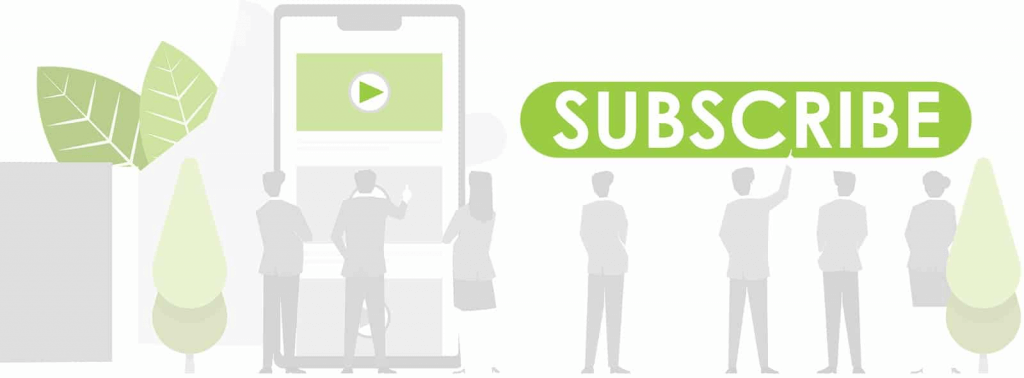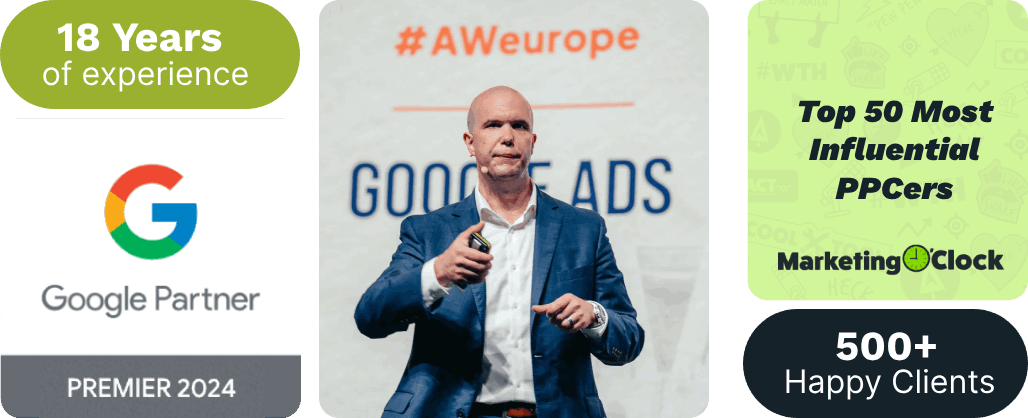According to Kasim, if you have been running Google Ads for 45 seconds or longer, you know there is a philosophical war being waged on the battlefield—and that war is brand traffic.
But, before you vehemently pick a side and draw your line in the proverbial dirt, hear us out. Why? Because we have been doing this a while (not to mention doing it to the tune of countless happy clients). And because we truly believe that bidding on your brand traffic is sometimes one of the smartest things you can do to win at Google Ads. (See? We didn’t say all the time.)
So, follow along if you’re so inclined, and we’ll break down the top reasons to bid on your brand name in this blog. (You can also watch the full video here.) Then, you’ll be able to decide whether or not this strategy is right for you based on your circumstances.
Deal? Deal. Let’s get started.
Table of Contents:

Reason #1: Prevent Poaching
In a nutshell, are other people bidding on your brand and stealing away traffic that should be yours? Before you say no, really think about it—because these “poachers” may not always be who you think of as your direct competitors. In fact, they can be alternatives, and Kasim gives a great example.
“If I were a Greyhound bus, I’d be bidding on all of Southwest Airlines traffic because I can get you there a whole lot cheaper than Southwest can. And Southwest people are looking for the cheapest possible form of transit.”
He goes on to explain that if your traffic is being poached from a paid ad perspective, it probably makes sense to bid on your brand traffic because a.) you are going to pay exponentially less than your competitors are; b.) you are going to be far more relevant than they are, which means you will rank higher in the search results; and c.) you are going to put yourself in a position to protect the entirety of your ad spend from being stolen right at the bottom of the funnel.
Of course, adds Kasim, that doesn’t necessarily mean that you should bid on brand just if people are advertising on your name—because they might do that no matter what and there’s nothing you can do to stop it. However, if they are doing so effectively, then you should take action. If you think they are actually being able to draw people away from you, then you should bid on your branded traffic.

Reason #2: The Google Auction
Here’s the gist: If somebody is bidding on your brand and you are not, they are paying way less than they would be otherwise.
Google’s auction system puts a heavy emphasis on relevance. It is based on the Vickrey Auction model, which utilizes the second-price mechanism. In other words, the winner pays the second-highest bidder’s price. What that means, says Kasim, is that because you are the most relevant result, you are going to rank the highest and pay the least.
But the amount that you pay sets the floor—and if you don’t enter the auction, then the floor is set much lower. So, if people are bidding on your branded traffic, yes you want to protect your brand, but you can also cost your competitors a significant amount of money, which is a pretty smart strategy.

Reason #3: More Conversion Data
According to Kasim, when you bid on your brand traffic, you’re giving yourself better visibility into what’s actually working from a conversion perspective.
It’s no secret Google has a massive attribution problem. Sure, it’s possible they’re stingy with conversion data because they worry about anti-privacy and antitrust laws, but at the end of the day, marketers can no longer see full conversion paths unless we pay for the data. Bidding on your branded traffic unveils those conversion paths.
And not only that, adds Kasim, but it can do so in ways that help you make educated decisions about other campaigns and campaign types, including non Google Ads-related campaigns. Take Facebook ads, for example. If you bid on branded traffic, you’ll notice that your conversion path will end with brand traffic from a paid perspective. But in some instances, you will be able to see the referral source, especially if you’re using Analytics properly.
In other words, bidding on branded traffic “lifts the veil” slightly, allowing you to see more conversion data than you normally would. Of course, it depends on other things like what business you’re in, how long your sales cycle is, etc. He adds that Google recently found that it takes roughly 20 clicks to sell a candy bar, but 500 clicks to sell an airline ticket.
“So you have to ask yourself,” says Kasim, “Where between candy bar and airline ticket is my product or service, in terms of how many touches we’re going to receive?” And the more touches, the more likely it is that you’re losing data. Bottom line: Even though you’re paying for traffic that you might get otherwise, the visibility is worth paying for—especially because branded traffic tends to be far less expensive.

Reason #4: Control the Narrative
The primary argument against bidding on branded traffic is always, “Why would I pay for traffic I’m going to get anyway?”
Sure, you can rank phenomenally well organically, be in the top position on the SERP and all that jazz, but you’re still not going to be able to control the narrative.
Google decides what your potential customers see based on metadata or onsite descriptions. In other words, it delivers content that you don’t get to decide at all. Yes, you may get to influence that content, but you don’t get to define it.
However, when you bid on branded traffic, the offer that you make is specific. The landing page that users visit can be very, very specific. The way you remarket to them is specific. So, you get to control the narrative and that can absolutely be worth it, especially if you have a really diverse offering.

The takeaway: Bid on brand, but don't go overboard.
Kasim’s advice to most advertisers is this: “Don’t max out your brand campaigns because that is where it gets a little bit too excessive.” He believes the theory that 20% of the branded traffic makes 80% of the impact. And the good news? That becomes pretty easy to find because branded traffic is one of the few campaign types where conversion tracking is still rock solid, since it is the extreme bottom of the funnel and you generally see results right away.
With other campaign types, it takes longer, results are diluted, and you have to worry about time lag. Brand campaigns are nice because you can see how effective they are and the brand traffic can be segmented according to many other factors.
So, advises Kasim, figure out within that available segmentation what branded traffic is working for you, and bid on that branded traffic. And you can do that simply by limiting the amount of money you have to spend in your brand campaign.
And finally, to all the naysayers out there who believe they’re going to get that traffic regardless, Kasim says it’s simply a balance of risks.
“Based on everything that I posited here, I would turn this back around on you and say, ‘Okay, when would you pay for it?’ Because it’s not never, right? It’s somewhere between 1% and 99%. It’s not zero and it’s not a hundred. So then you get to decide on the spectrum what the right answer is for you, and you’re never going to get it perfect. It’s an iterative process.”
And there you have it. Go forth and bid on brand!
Author
Pamela is the Senior Content Writer at Solutions 8. When she's not writing, you can find her hiking in the woods with her dogs. She is currently on a quest to visit every national park in the United States.
 Pamela Sapio
Pamela Sapio











